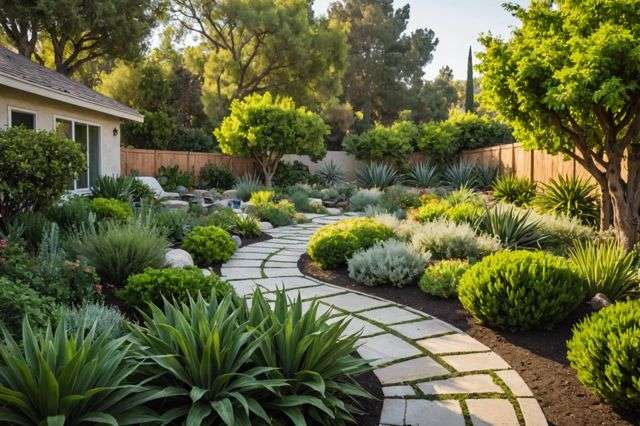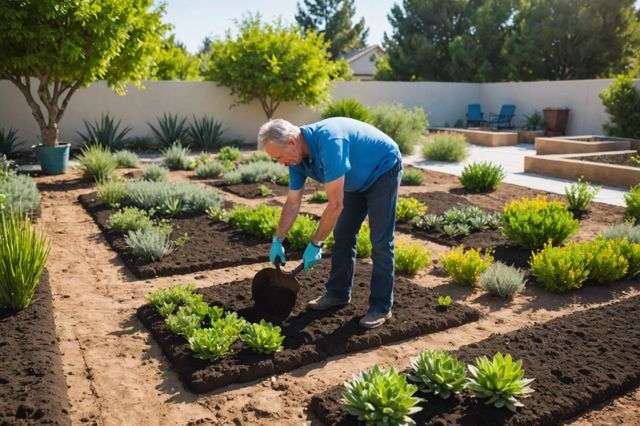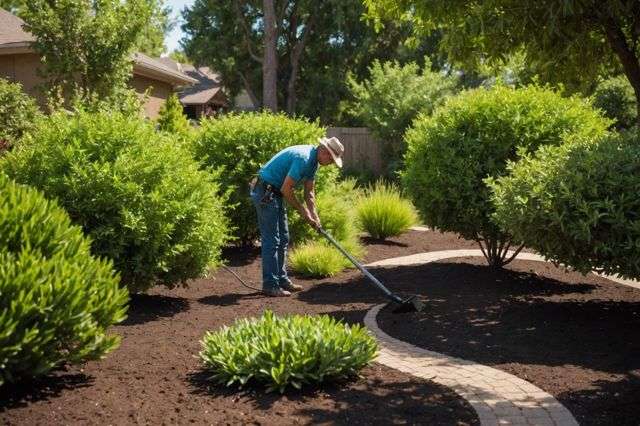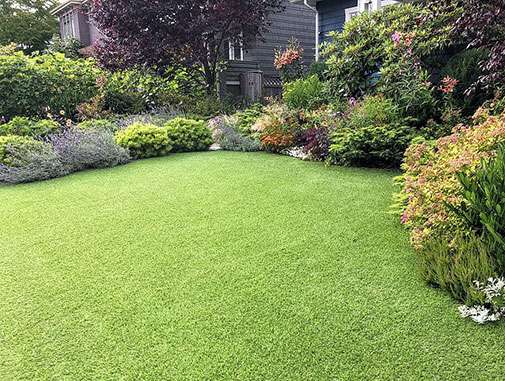Backyard Remodel: 2024 Guide to a Drought-Resistant Oasis in Encino
- #Exterior Remodeling
- #Outdoor Living

- Smooth Plaster Finish
- Shimmering Pebble Finish
To remodel your backyard into a drought-resistant oasis in Encino, CA, start by choosing native plants that thrive in low-water conditions and planning a garden layout that considers soil, sun, and water needs. Incorporate efficient irrigation systems like drip irrigation, use mulch to retain soil moisture, and regularly maintain your garden to adapt to local drought conditions.
Introduction to Drought-Resistant Gardening in Encino
In this article, we simplify the official document that is available on Encino city website.
Creating a drought-resistant garden in Encino focuses on water conservation and sustainable gardening. Here are some key points:
- Importance of Drought-Resistant Gardens: In Encino, water is a precious resource. The local supply isn’t replenishing fast enough, and most of our water is imported, which is costly.
- Benefits of Sustainable Gardening:
- Reduces water usage by at least half compared to traditional gardening.
- Supports a diverse ecosystem with plants that thrive on minimal water.
- Saves money and time on garden maintenance.
- Planning Your Garden:
- Choose plants that naturally thrive in Encino’s climate without needing extra watering.
- Group plants by their water, soil, and sunlight needs to optimize growth without extra resources.
- Garden Maintenance Tips:
- Use mulch to help retain soil moisture and reduce water evaporation.
- Regularly check and maintain your garden to ensure plants are healthy and well-adapted to the dry conditions.
By following these guidelines, residents of Encino can enjoy lush, beautiful gardens that require less water and maintenance, contributing to the sustainability of the community.

Planning Your Drought-Resistant Garden
- Start by designing your garden to fit your space. Use a site plan to map out where each plant will go according to their needs for soil, water, and sunlight.
- Choose plants suited to your local climate and soil type. Refer to plant lists that match your area’s climate zone to ensure your garden thrives.
- Prepare your garden by cleaning up the area. Remove debris, weeds, and any plants that won’t fit into your drought-resistant design.
- Improve your garden’s soil by grading for rain. This involves shaping the soil to capture rainfall effectively. Avoid compacting the soil as it should allow water to seep through.
- Incorporate living soil strategies by removing unwanted lawn and adding compost. This will enrich the soil, making it better for plant growth and water absorption.
- Lay out all your plants before planting. This helps you visualize the garden and make any final adjustments to the layout.
- Plant your garden carefully. Ensure each plant has enough space to grow and access to sunlight and water.
- Set up an efficient watering system. Consider drip irrigation to save water and direct it precisely where it’s needed.
- Apply mulch around your plants. Mulch helps retain soil moisture, suppresses weeds, and improves soil quality.
- Regularly tend to your garden. This includes watering appropriately, weeding, and monitoring plant health. Adjust care as needed based on weather conditions and plant needs.
Implementing Your Garden Design
- Begin by cleaning up your garden area. Remove trash, weeds, and any unwanted plants or objects.
- Decide which plants will stay. Keep those that will thrive in a drought-tolerant setting and remove the rest.
- Adjust the soil to manage rainwater effectively. This includes grading the soil to capture rainfall, which is crucial in drought conditions.
- Prepare your soil by removing unwanted lawn and testing it to see what improvements it might need. Follow guidelines to enrich the soil.
- Lay out your plants according to your plan before planting. This helps ensure the design looks good and the plants fit well together.
- Plant your selections following detailed steps to ensure they establish well.
- Install or adjust your irrigation system. If you’re using a drip system, set it up after planting. For existing systems, make adjustments before planting.
- Apply mulch around your plants. This helps retain moisture and suppress weeds.
- After planting, give your garden regular care. This includes watering the new plants, weeding, and watching for any signs of distress in your garden. Keep an eye on water needs without overdoing it, as your drought-tolerant garden requires less water.

Maintenance Tips for Drought-Resistant Gardens
- Watering Your Garden: Only water your drought-resistant garden when the top few inches of soil are dry. Check by sticking your finger into the soil. Water deeply but infrequently to encourage deep root growth.
- Mulching: Apply a thick layer of mulch around your plants. This helps retain moisture, keeps the soil cool, and suppresses weeds. Replenish the mulch as needed, especially after it decomposes.
- Seasonal Care:
- Spring: Check irrigation systems and repair any damages. Start watering if the rain isn’t sufficient.
- Summer: Minimize watering but monitor plant health as heat increases.
- Fall: Reduce watering as temperatures drop and prepare plants for cooler weather.
- Winter: Protect plants from frost if necessary and cut back on watering further.
- Weeding: Regularly remove weeds to prevent them from competing with your drought-resistant plants for water and nutrients.
- Pruning: Trim back dead or overgrown branches to promote healthy growth and maintain the shape of your plants.
- Fertilizing: Generally, drought-resistant gardens require less fertilizer. If needed, use a low-nitrogen, slow-release fertilizer to prevent excessive growth that could increase water demand.

Additional Resources and Local Plant Choices
- Discover a wealth of resources on drought-resistant gardening tailored for Encino, CA. Utilize local plant selections ideal for the climate to enhance your backyard.
- Explore the LA Climate Zone Map to identify plants suitable for your specific area.
- For further guidance and inspiration, consult the “Resources & Index” section on page 46 of the handbook.
- Local nurseries like Armstrong Garden Centers and Home Depot offer a variety of suitable plants. Connect with them for specific needs and availability.
- Engage with local experts by visiting botanical gardens such as the Los Angeles County Arboretum & Botanic Garden. Contact at (626) 821-3222 or visit www.arboretum.org.
- For specialized plant options, consider contacting California Nursery Specialties for drought-resistant varieties at (818) 894-5694 or check their offerings at www.california-cactus-succulents.com.

FAQ
What is the importance of having a drought-resistant garden in Encino?
Creating a drought-resistant garden is crucial in Encino because water is a scarce resource. The local water supply doesn’t replenish quickly, and most water has to be imported, making it an expensive and limited resource.
How does sustainable gardening benefit the local ecosystem in Encino?
Sustainable gardening reduces water usage by at least 50% compared to traditional methods, supports a diverse ecosystem with plants that need minimal water, and saves money and time on maintenance.
What are the initial steps to plan a drought-resistant garden in Encino?
Begin by assessing the space and creating a site plan that maps out where each plant will go based on their needs for soil, water, and sunlight. Choose plants that are well-suited to the local climate and soil type, and prepare the area by cleaning and grading the soil for effective rain capture.
How should I maintain my drought-resistant garden?
Maintain your garden by using mulch to retain soil moisture and reduce evaporation, regularly checking the health of your plants, watering only when the top few inches of soil are dry, and applying a thick layer of mulch to help retain moisture and suppress weeds.
What are some specific maintenance tips for different seasons?
- Spring: Check and repair irrigation systems. Start watering if rainfall is insufficient.
- Summer: Reduce watering but watch for plant health as temperatures rise.
- Fall: Cut down on watering as temperatures drop, and prepare plants for the cooler weather.
- Winter: Protect plants from frost and minimize watering further.
What local resources are available for choosing plants and receiving guidance on drought-resistant gardening in Encino?
Local resources include Armstrong Garden Centers and Home Depot for plant selections, and the Los Angeles County Arboretum & Botanic Garden for expert advice. Additionally, California Nursery Specialties offers specialized drought-resistant plants. Utilize the LA Climate Zone Map and the handbook referenced in the article for comprehensive guidance.









